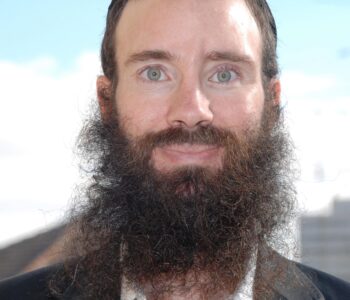
The science is not settled
Mask wearing has become quite controversial as of late. From a feature of doctors and nurses, they have become required for the entire public in many locals. Not to protect the wearer, but to protect others from the wearer – in case he/she is infected. There are studies that show that masks work or may work to help control the spread of viruses (especially studies conducted post-Covid-19 detection). However, there are also many studies that cast doubt on the efficacy of masks in preventing illness. Here are a few of them.
CDC publishes study concluding that masks don’t prevent spread of influenza
A study conducted in preparation for the development of guidelines by the World Health Organization found that face masks did not prevent the transmission of flu virus worn by the infected person for source control or when worn by uninfected persons to reduce exposure 1.
Our systematic review found no significant effect of face masks on transmission of laboratory-confirmed influenza.
…
Although mechanistic studies support the potential effect of hand hygiene or face masks, evidence from 14 randomized controlled trials of these measures did not support a substantial effect on transmission of laboratory-confirmed influenza.
WHO recommends wearing masks even without evidence of efficacy
The WHO’s advice on mask use suggests the use of face masks, despite no evidence that they are effective and with acknowledged harms 2.
Health care workers are advised to wear masks based on preferences and values since there is no scientific evidence for this (bolded for emphasis).
There are currently no studies that have evaluated the effectiveness and potential adverse effects of universal or targeted continuous mask use by health workers in preventing transmission of SARS-CoV-2. Despite the lack of evidence the great majority of the WHO COVID-19 IPC GDG members supports the practice of health workers and caregivers in clinical areas (irrespective of whether there are COVID-19 or other patients in the clinical areas) in geographic settings where there is known or suspected community transmission of COVID-19, to continuously wear a medical mask throughout their shift, apart from when eating and drinking or changing the mask after caring for a patient requiring droplet/contact precautions for other reasons (e.g., influenza), to avoid any possibility of cross-transmission.
This practice reflects the strong preferences and values placed on preventing potential COVID-19 infections in health workers and in non-COVID-19 patients; these preferences and values may outweigh both the potential discomfort and other negative consequences of continuously wearing a medical mask throughout their shift and the current lack of evidence.
For the general public the WHO offers one likely health reason and three likely social reasons for wearing masks.
Potential benefits/advantages
The likely advantages of the use of masks by healthy people in the general public include:
• reduced potential exposure risk from infected persons before they develop symptoms;
• reduced potential stigmatization of individuals wearing masks to prevent infecting others (source control) or of people caring for COVID-19 patients in non-clinical settings;(70)
• making people feel they can play a role in contributing to stopping spread of the virus;• reminding people to be compliant with other measures (e.g., hand hygiene, not touching nose and mouth). However, this can also have the reverse effect (see below);
• potential social and economic benefits. Amidst the global shortage of surgical masks and PPE, encouraging the public to create their own fabric masks may promote individual enterprise and community integration. Moreover, the production of non-medical masks may offer a source of income for those able to manufacture masks within their communities. Fabric masks can also be a form of cultural expression, encouraging public acceptance of protection measures in general. The safe re-use of fabric masks will also reduce costs and waste and contribute to sustainability.Potential harms/disadvantages
The likely disadvantages of the use of mask by healthy people in the general public include:
• potential increased risk of self-contamination due to the manipulation of a face mask and subsequently touching eyes with contaminated hands;(48, 49)
• potential self-contamination that can occur if non-medical masks are not changed when wet or soiled. This can create favorable conditions for microorganism to amplify;
• potential headache and/or breathing difficulties, depending on type of mask used;
• potential development of facial skin lesions, irritant dermatitis or worsening acne, when used frequently for long hours;(50)
• difficulty with communicating clearly;
• potential discomfort;(41, 51)
• a false sense of security, leading to potentially lower adherence to other critical preventive measures such as physical distancing and hand hygiene;
• poor compliance with mask wearing, in particular by young children;
• waste management issues; improper mask disposal leading to increased litter in public places, risk of contamination to street cleaners and environment hazard;
• difficulty communicating for deaf persons who rely on lip reading;
• disadvantages for or difficulty wearing them, especially for children, developmentally challenged persons, those with mental illness, elderly persons with cognitive impairment, those with asthma or chronic respiratory or breathing problems, those who have had facial trauma or recent oral maxillofacial surgery, and those living in hot and humid environments.
A doctor and bio-weapons researcher speaks about the fallacy of masks
… I served on a congressional committee that looked at technology for the military, for the navy specifically, and as that I researched bio-weapons and all sorts of stuff and masks. And I’m going to tell you – in my entire professional career I’ve never heard anybody actually believe that these kind of, any kind of, masks short of an actual level 4 containment suit made a difference to small particle viruses. In fact, the CDC itself just published an article in May, exactly saying that they cannot, you cannot contain uh influenza with these masks and that’s even larger than this virus. Now, I reviewed all this science. I gave a talk out in Nevada last month and it’s online, YouTube, Medical Technocracy, in my name, and you can look at all the sciency stuff. My conclusion looking at all the redoing my investigation of this this time, is that people that are now purporting to scientifically prove masks work are either being paid or being played. This just doesn’t work this way. And, um, you know the the outcome of this is not going to be good.
Surgeons wear masks all the time – but do they work?
The wearing of surgical face masks in the operating room is one of many long-standing practices, yet controversy exists as to whether it actually reduces the frequency of surgical site infections. Additionally, although they may protect operating room staff from infectious bodily fluid splashes from patients, general purpose disposable surgical face masks are not specifically designed to protect the wearer from airborne infectious particulates.
A review of the literature revealed the following:
• No evidence was found to support the use of surgical face masks to reduce the frequency of surgical site infections.
• No evidence was found on the effectiveness of wearing surgical face masks to protect staff from infectious material in the operating room.
• Guidelines recommend the use of surgical face masks by staff in the operating room to protect both operating room staff and patients (despite the lack of evidence)Key Message
The use of surgical face masks by staff in the operating room is presumed to reduce the frequency of surgical site infections. The evidence identified and included in this report finds no evidence basis for this presumption. The consensus of the systematic reviews included in this report is that there is a paucity of data on this topic, and that current evidence is lacking for altering clinical practice. The included guidelines of this report are also in agreement that the long standing practice of wearing surgical face masks in the operating room should continue despite the lack of clinical efficacy evidence3.
Venting and wicking: are these surgical face mask risks relevant to the public today?
More questions about surgical face masks. Emphasis added.
Surgical face masks were originally developed to contain and filter droplets of microorganisms expelled from the mouth and nasopharynx of healthcare workers during surgery, thereby providing protection for the patient. However, there are several ways in which surgical face masks could potentially contribute to contamination of the surgical wound. Surgical face masks have recently been advocated as a protective barrier between the surgical team and the patient, but the role of the surgical face mask as an effective measure in preventing surgical wound infections is questionable. The aim of the systematic review is to identify and review all randomized controlled trials evaluating disposable surgical face masks worn by the surgical team during clean surgery to prevent postoperative surgical wound infection.
The surgical face mask is disposable and generally made up of three or four layers. It is normally designed with two filters that act as a barrier down to 1 micron therefore trapping bacteria of that size or larger. The protection afforded by this type of mask is claimed to be a minimum of four hours (UHS 2000). Worn correctly the mask should cover the nose with the metal band contouring the bridge of the nose. The mask should be drawn underneath the mouth and secured by tying the tapes firmly around the back of the head.
Although the surgical mask is designed to protect the patient there are several ways in which it could contribute to contamination of the surgical wound. Firstly insufficient tension on the strings causes ‘venting’. Venting is leakage of air from the side of the mask. The exhaling of moist air increases resistance, which is thought to exacerbate the problem of venting (Belkin 1996).
Secondly Belkin 1996 also cites ‘wicking’ as a method of conveying liquid via capillary action as possibly contributing to the passage of bacteria.
Thirdly a mask could cause contamination by ‘wiggling’. This is a term used to describe friction of the mask against the face which has been shown to cause the dispersal of skin scales from the face resulting in possible contamination of surgical wounds (Schweizer 1976).
In addition the mask may be worn incorrectly for example allowing exposure of the nose or mouth. Removal of the mask by grasping the filter section could result in contamination of the wearer’s hands whereas disposal is recommended by handling the tapes only (Perry 1994).
These issues call into question the effectiveness of the design and highlight the incorrect use of surgical face masks. As with many interventions surgical face masks were introduced without standard specifications or formal evaluation. …
…
From the limited results it is unclear whether wearing surgical face masks causes any harm or benefit to the patient undergoing clean surgery. 4.
Government mask mandates ignore the science
No RCT study with verified outcome shows a benefit for HCW or community members in households to wearing a mask or respirator. There is no such study. There are no exceptions.
Likewise, no study exists that shows a benefit from a broad policy to wear masks in public (more on this below).
Furthermore, if there were any benefit to wearing a mask, because of the blocking power against droplets and aerosol particles, then there should be more benefit from wearing a respirator (N95) compared to a surgical mask, yet several large meta-analyses, and all the RCT, prove that there is no such relative benefit.
Masks and respirators do not work.
…
Why There Can Never Be an Empirical Test of a Nation-Wide Mask-Wearing Policy
As mentioned above, no study exists that shows a benefit from a broad policy to wear masks in public. There is good reason for this. It would be impossible to obtain unambiguous and bias-free results [because]:
- Any benefit from mask-wearing would have to be a small effect, since undetected in controlled experiments, which would be swamped by the larger effects, notably the large effect from changing atmospheric humidity.
- Mask compliance and mask adjustment habits would be unknown.
- Mask-wearing is associated (correlated) with several other health behaviors; see Wada (2012).
- The results would not be transferable, because of differing cultural habits.
- Compliance is achieved by fear, and individuals can habituate to fear-based propaganda, and can have disparate basic responses.
- Monitoring and compliance measurement are near-impossible, and subject to large errors.
- Self-reporting (such as in surveys) is notoriously biased, because individuals have the self-interested belief that their efforts are useful.
- Progression of the epidemic is not verified with reliable tests on large population samples, and generally relies on non-representative hospital visits or admissions.
- Several different pathogens (viruses and strains of viruses) causing respiratory illness generally act together, in the same population and/or in individuals, and are not resolved, while having different epidemiological characteristics.
…
By making mask-wearing recommendations and policies for the general public, or by expressly condoning the practice, governments have both ignored the scientific evidence and done the opposite of following the precautionary principle5.
Footnotes






